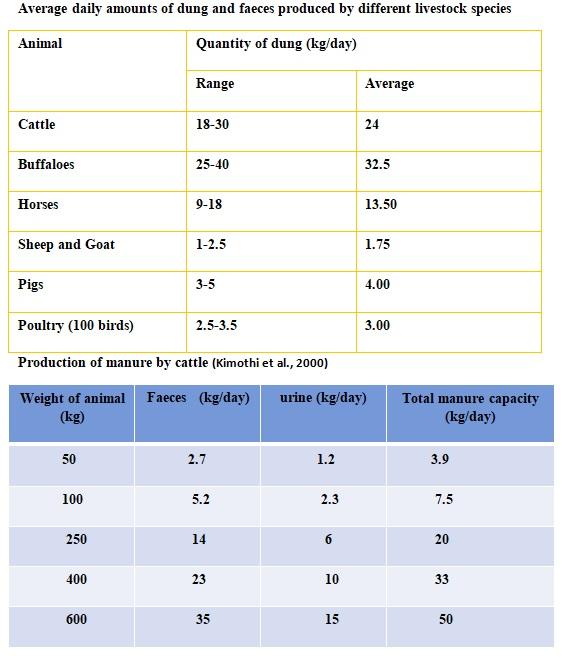Instead of taking manure and other farm by-products as waste for disposal, they are now utilized by various efficient methods which are as follows:
Anaerobic digestion
It is a complex breakdown of wastes mainly in three steps viz. Hydrolysis, Fermentation, and Methanogenesis
Benefits of anaerobic digestion of waste (Beddoes et al., 2007)
- Fowl smell control
- Reduction of nuisance gas emission
- Potential pathogen kill
- Conversion of organic nitrogen in to plant available ammonia nitrogen
- Preservation of plant nutrients(e.g. N,P,K)
- Production of a renewable energy source –biogas
Bio-hydrogenation process
Photo-synthetically by algae (Ghirardi et al., 2000)
- Algae converts water molecules into hydrogen ions and oxygen (aerobic stage)
- Hydrogen ion is converted into hydrogen hydrogenase enzymes(anaerobic stage because hydrogenase activity is repressed by oxygen)
Photo-biologically by photo-fermentative bacteria (Oh et al., 2004)
- Organic acids such as acetic acid, butyric acid, and lactic acid are converted into hydrogen and carbon dioxide by bacteria
- Conversion is done in presence of light and anaerobic conditions
Bio-methanol production
Methane-derived methanol (Rozenzweig et al., 2007)
CH4+O2+2e- → CH3OH+H2O in presence of methane mono-oxygenase
Carbon dioxide-derived methanol
Three steps involved are:
- Carbon dioxide is reduced to formate by formate dehydrogenase
- Formate is converted to formaldehyde by formaldehyde dehydrogenase
- Formaldehyde converted to methanol by alcohol dehydrogenase
Composting
The process of decomposing organic wastes is called Composting.
Methods of composting
- Indore method -Pit method
- Bio dung method–Heap method
- Bio-digested method –biogas plant
- Vermi compost–earth worm composting
- Bangalore method – anaerobic composting
- Coimbatore method –semi-aerobic compost
- Super compost–addition of super phosphate
Vermicompost
The best manure worms are Eisenia foetida, as it works everywhere, indoor as well as outdoor.
Katcha floor, humid and shady place, temperature- 20-28°C, 50% biodigested slurry and 50% green biomass - 40-45 days very good vermicompost.
Advantages of vermicompost
- Improves soil aeration, texture, and water retention capacity of soil
- Improves nutrient status of soil both macro and micro nutrients
- Promotes better root growth and nutrient absorption
- It does not have any adverse effect on soil, plant and environment
Biogas
It is a gas made from anaerobic digestion of agricultural and animal waste. This gas is a mixture of 65% methane, 30% CO2 and 1% H2S. Nowadays, many trained persons are selling cylinders of biogas as a clean and efficient fuel. This also shows scope of new type of business that one can think of.
Use of cow urine in therapy (Chouhan, 2006)
- Cow urine can be used as a therapy in several disorder like diabetes, cancer, tuberculosis, disease of ears, teeth, skin, kidney, liver, biopsy, jaundice and plague
- Urine contains volatile salts it is useful in acidity, paralysis, pain in kidney and intestine
Conclusions
Old practices of disposal of farm waste should be updated with modern techniques. Biogas technology is not fully adopted by Indian farmers because in India most of farmers have too small livestock herd, rusting problem of biogas plant equipment, Vermicompost is more preferable because of easy to manufacture and enhance soil fertility, Bio-hydrogenation, bio-methanol production are limited to laboratory.


















